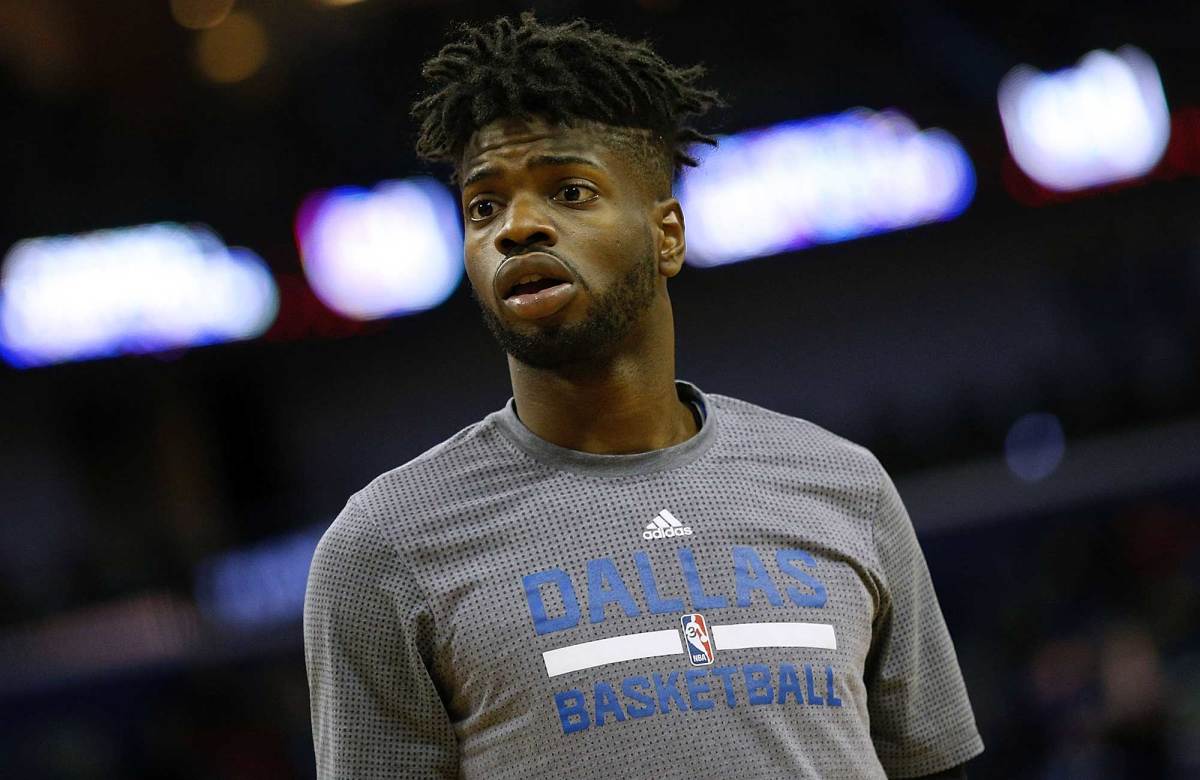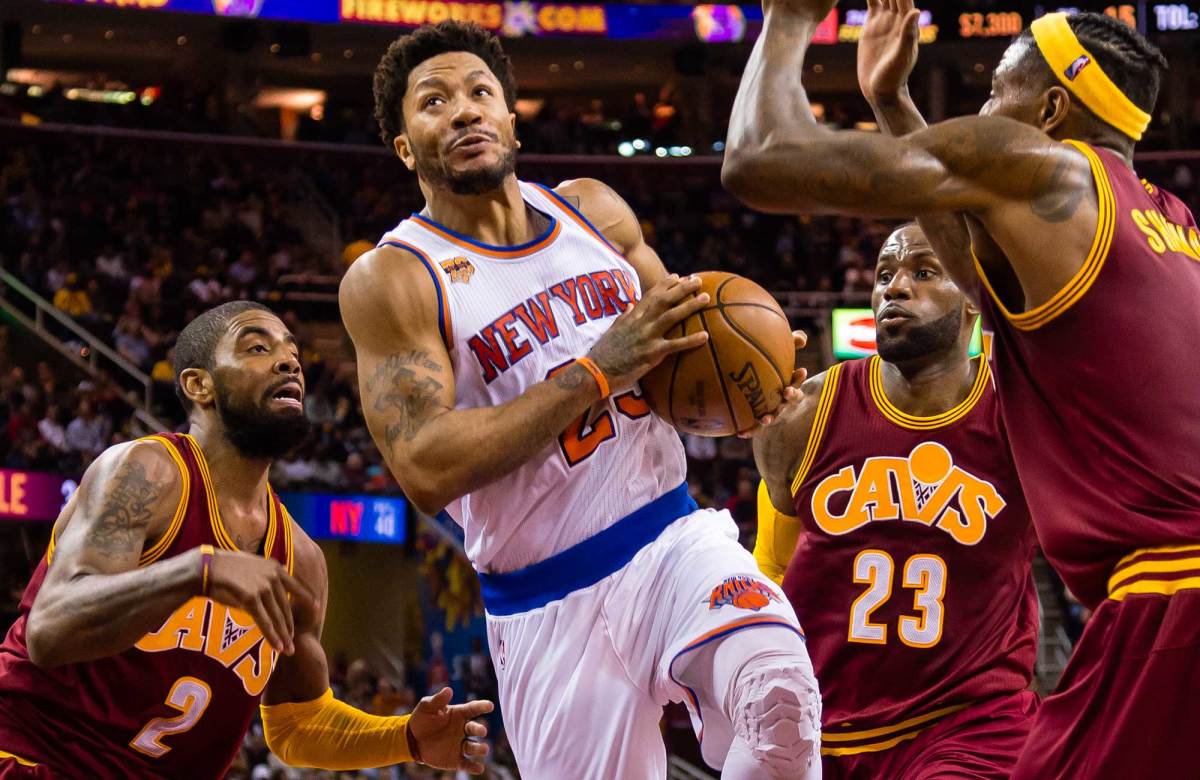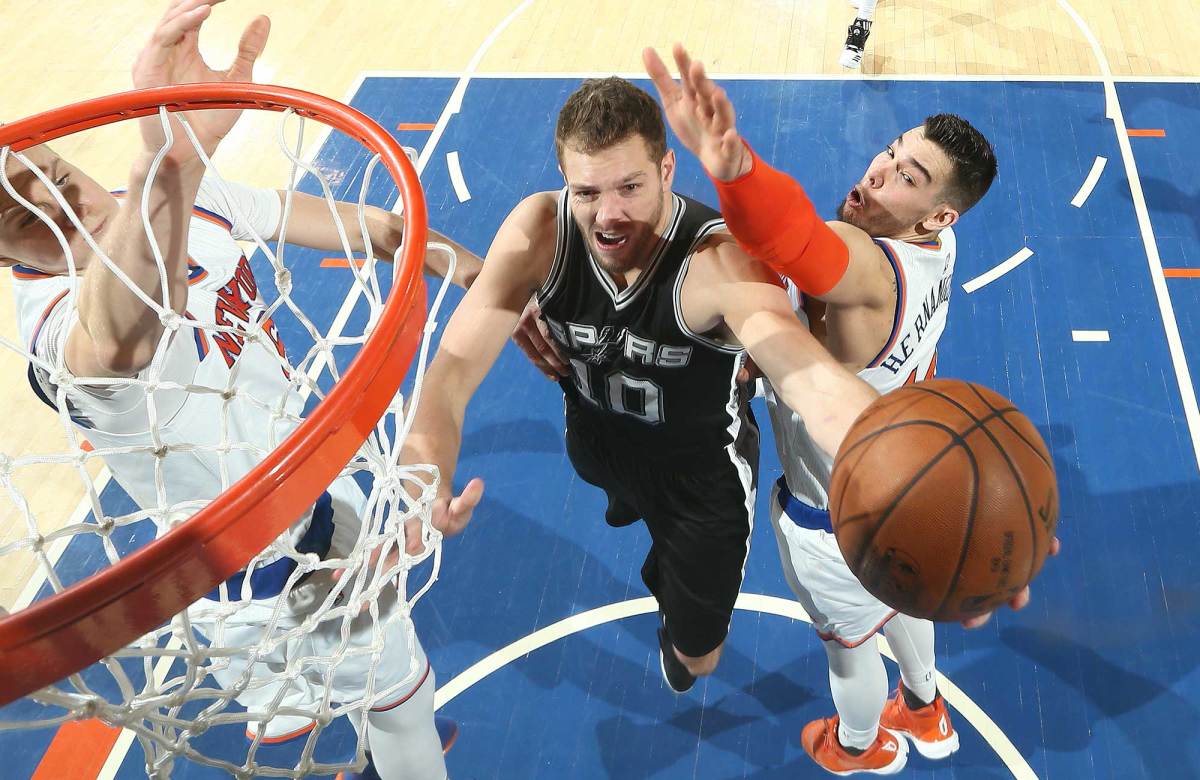2017 NBA Free Agency: Top 10 Players Still Left

The cap room has been spent and press conferences held. Free agency as we know it—that fury of rumor and movement that overtakes the entire sporting world—has come to a close.
What’s left are filler and formalities. Some are still on the market by choice, hoping for an offer that might never come. The perception of last summer’s salary cap spike and the way it curbed spending this summer created real dissonance in the league. Many players were expecting to make millions (or even tens of millions) more than they were ever offered. The market moved quickly in spite of this, but it left some free agents spiraling in their search for alternatives.
Below are the best of those left—none stars, but all potentially useful in their own way. Here are the top 10 NBA free agents still on the board.

1. NERLENS NOEL (RESTRICTED)
The Mavericks seem to have scared off potential Noel suitors with enough cap room to actually offer him the kind of deal he’s looking for. In play was the projection of a sunk cost; Dallas gave up a wing prospect (Justin Anderson) and draft picks at the trade deadline to acquire Noel within months of his free agency—the kind of investment a team typically makes only if it intends to follow through on re-signing the player acquired. Teams around the league operated accordingly. Noel’s restricted status ensured that the Mavs would have the last word (or really, the right of first refusal) on any formal offer, leaving Noel to negotiate a new deal with little in the way of leverage.
What shouldn’t be in question is Dallas’s interest. Noel is exactly the sort of center the Mavs have long preferred: a dedicated roll man with real defensive chops. Noel played strong individual defense on some woefully (and purposefully) incomplete Sixers teams over the last three years and projects as the kind of center who could anchor a defense with more structure. Quick feet and quicker hands make him a real catch. Anything he contributes on offense beyond that is gravy.
2. MASON PLUMLEE (RESTRICTED)
Plumlee has a lot of the big-picture skills (finishing, shot-blocking, frontcourt playmaking) that teams crave, but is missing some of the connective tissue that would elevate his game. Still he’s proficient enough to play a considerable role for the right team. Plumlee, like most, simply needs help. He can’t carry a defense by himself and isn’t a prolific enough rebounder to prop up small-ball lineups on the glass. He sees the floor well but shouldn’t be creating for himself. Put the right infrastructure around him, however, and Plumlee can round out some rough edges.
Why Kyrie Irving's Trade Request (Kind of) Makes Sense
3. JAMYCHAL GREEN (RESTRICTED)
Green has carved out a place for himself as a sturdy big without much damning weakness. The worst that can really be said of his game is that over-fouling still gets in his way. Otherwise, Green can shoot a bit, rebound well enough, defend competently, and contribute without all that many touches. A drying market points to a likely return to the Grizzlies, one way or another. More on that situation here.
4. NIKOLA MIROTIC (RESTRICTED)
In his three NBA seasons, Mirotic has been more valuable in theory than reality. There’s no question he can help a team when his shot is falling. When it’s not, Mirotic rarely contributes enough as a defender, rebounder, driver, or playmaker to justify substantial minutes. There’s still time for Mirotic, 26, to turn things around; the relative dysfunction of the Bulls over the last few years offers some hope that his game might play better in a more stable environment. Yet as is the case with so many other restricted free agents, Mirotic seems increasingly likely to stick with Chicago the longer he sits on the market.

5. DERRICK ROSE (SIGNED)
Update: The Cavaliers and Rose have agreed to a one-year, $2.1 million deal, according to The Vertical's Shams Charania.
Rose is among the most capable and frustrating players left on the market. Even after a bounce-back year with the Knicks last season, it seems almost impossible to place him; Rose has to have the ball in his hands to be effective but doesn’t quite justify that investment with his play. His game naturally projects a higher-usage style, but any team that relies on him in that way limits itself. To make matters worse: Rose is a role player who still carries himself like a superstar. It would be one thing if he could defend, shoot from range, or even facilitate (by working off of other playmakers) at a respectable NBA level. That he can’t locks him into a particular sort of role that he isn’t quite good enough to carry. This is how a former MVP winds up fishing for minor offers.
6. IAN CLARK
Clark’s play with the Warriors likely bumped him out of minimum salary range, which is part of the reason Golden State went searching for alternatives in the first place. As franchises pull as many stars together as they can find, the responsibility for bench scoring has increasingly fallen to cost-effective players like Clark. The shooting and cutting Clark offered last season was good for an efficient 16.7 points per 36 minutes—enough to help spell Stephen Curry and Klay Thompson during rest and injury. Clark’s streak scoring is still a bit too inconsistent for a big deal, but his market should fit comfortably into the various (and moderate) salary cap exceptions available.

7. DAVID LEE
Very quietly, the Spurs got quite a bit out of Lee last season. There will always be caveats about his defense, though in this case the best team defense in the league still found room to play Lee—and rely on him—for almost 20 minutes a night. It did so while also relying on Pau Gasol, Manu Ginobili, and Tony Parker—none of whom are plus defenders at their age. San Antonio just made it work, imperfect personnel and all. The Spurs may be on a different institutional level when it comes to incorporating skilled players of all kinds, but to do so with an aging core and without a catch-all rim protector bodes well for Lee. Not every team is a fit for his rolling and playmaking, but perhaps more could than seemed a year ago.
8. JAVALE MCGEE
McGee is the most conditional player on this list. What he needs most—and more than even other players in a similar salary range—is a team that can disguise his defensive liability as much as possible. Do that and his rolls to the rim can force changes to an opponent’s approach. Defenses aren’t used to dealing with players quite this big and quite this mobile, which in itself makes McGee interesting as a change-of-pace alternative. Franchises simply need to understand that what they saw of McGee in Golden State was a best-case scenario on both sides of the ball: a spread offense that gave him room to dive and a defense that switched so often as to limit his need to show and rotate.
9. TONY ALLEN
The market has been depleted to the point that most of the players still available are deeply flawed in some way—Allen among the most noticeably so. The book on Allen is out. Teams can cross-match against him without penalty. Defenders tasked to guard him can wander away to offer help without much fear of giving up points on the back end. The league knows that Allen cannot shoot and struggles to finish. It also understands well the hex he puts on opposing scorers and the connection his hard work forms with a fan base. Allen became a legend in Memphis because he played up into point guards with full-court coverage and worked over bigger wings when called upon. Nothing comes easy for those working against Allen. Unfortunately, nothing comes easy for his teammates, either.
10. SHABAZZ MUHAMMAD
The Wolves made their intentions with Muhammad clear when they chose to rescind his qualifying offer, thereby lifting the restriction on his free agency. Muhammad is free to sign where he likes—though the market for a high-scoring, 24-year-old wing isn’t as robust as one might think. Muhammad tends to play with blinders on. In four years he averaged a measly 1.1 assists per 36 minutes as one of the NBA’s preeminent black-hole scorers. The catch is: It kind of works. Muhammad has the size and strength to bully his way into buckets, even if he doesn’t have a reliable touch from the perimeter. So long as he’s deployed as a specialist by a team that understands his limitation, Muhammad can have a productive place in a rotation.
